TPH
TPH belongs to the superfamily of aromatic amino acid hydroxylases which also includes tyrosine hydroxylase and phenylalanine hydroxylase (PAH). 5-HT is synthesized by two tryptophan hydroxylases, TPH1 in ECs of the gut and TPH2 in hindbrain raphe nuclei. EC-derived 5-HT is transported by circulating platelets and released upon their activation. TPH1 and TPH2 are highly homologous proteins, but differ in their kinetic properties and, more notably, in their tissue distribution. TPH2 is predominantly expressed in raphe neurons of the brainstem and myenteric neurons in the gut, and is considered to be the source of the central neurotransmitter pool of 5-HT. The majority of blood 5-HT is synthesized by TPH1-expressing ECs of the gastrointestinal (GI) tract and enters the circulation packed in dense granules of thrombocytes where it mediates its hormonal actions upon platelet release at the site of activation.
TPH1 is also found in other peripheral tissues such as pancreas, fat, and lung, as well as in the pineal gland where 5-HT serves as a precursor molecule for melatonin biosynthesis. Therapeutics involving the serotonergic system only targeted 5-HT transporters and receptors, and were mostly aimed at central indications such as depression, psychosis, and migraine.The dualistic character of the 5-HT system, enforced by the inability of 5-HT to freely cross the blood–brain barrier in either direction, gave rise to the opportunity to pharmacologically target central and peripheral 5-HT biosynthesis in an independent manner.
References
1.Matthes S, et al. Trends Pharmacol Sci. 2018;39(6):560–572.
TPH1 is also found in other peripheral tissues such as pancreas, fat, and lung, as well as in the pineal gland where 5-HT serves as a precursor molecule for melatonin biosynthesis. Therapeutics involving the serotonergic system only targeted 5-HT transporters and receptors, and were mostly aimed at central indications such as depression, psychosis, and migraine.The dualistic character of the 5-HT system, enforced by the inability of 5-HT to freely cross the blood–brain barrier in either direction, gave rise to the opportunity to pharmacologically target central and peripheral 5-HT biosynthesis in an independent manner.
References
1.Matthes S, et al. Trends Pharmacol Sci. 2018;39(6):560–572.
Metabolic Enzyme/Protease
11β-HSD(15)
15-PGDH(1)
ACC(10)
ACE(15)
AChE(47)
Adenylate Cyclase(12)
ALDH(14)
Aldose Reductase(5)
Aminopeptidase(19)
BACE(19)
Casein Kinase(51)
CAT(5)
Cathepsin(9)
CETP(13)
COMT(2)
CPG2(1)
CYPs(6)
Decarboxylase(3)
Dehydrogenase(131)
DGAT(4)
Dopamine beta-hydroxylase(2)
DPP(32)
Elastase(6)
FAAH(28)
Factor Xa(31)
Fatty Acid Synthase(17)
Ftase(2)
FXR(26)
Glucokinase(1)
GSNOR(2)
Guanylate Cyclase(13)
HMGCR(17)
IDH(7)
IDO(20)
IMPDH(2)
LDH(2)
LDL(8)
Lipase(17)
Lipid(12)
MAGL(6)
MAO(72)
MMP(78)
NAMPT(12)
Neprilysin(7)
Other Targets(10)
P450(112)
PAI-1(9)
Phosphatase(95)
Phospholipase(65)
PPAR(115)
Protein Phosphatase/PTP(6)
Renin(8)
Retinoid Receptor(37)
SCD(6)
Steroid Sulfatase (STS)(2)
Thioredoxin(1)
TPH(5)
Transferase(37)
Vitamin(44)
Xanthine Oxidase (XAO)(11)
TPH
-
LX-1031
产品货号 : M16780
cas no: 945976-76-1
LX-1031 是一种有效的口服活性色氨酸 5-羟化酶 (TPH) 抑制剂,效力为 10-100 nM。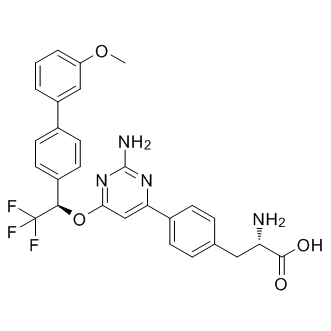
-
KAR-5585
产品货号 : M12555
cas no: 1673571-51-1
KAR-5585 (Rodatristat) 是强效 TPH1 抑制剂 KAR5417 的前药。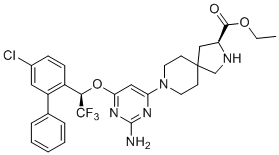
-
Telotristat etiprate
产品货号 : M10482
cas no: 1137608-69-5
Telotristat etiprate (LX1606 hippurate) 是一种口服活性的小分子外周血清素合成抑制剂。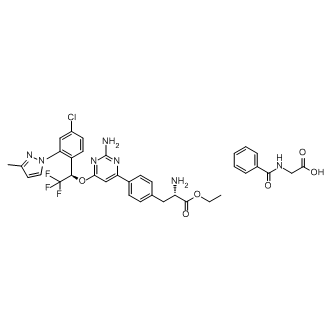
-
Telotristat
产品货号 : M10166
cas no: 1033805-28-5
Telotristat (LP-778902) 是一种有效的外周血清素合成小分子抑制剂,通过抑制色氨酸羟化酶 (TPH) 发挥作用,IC50 为 28 nM。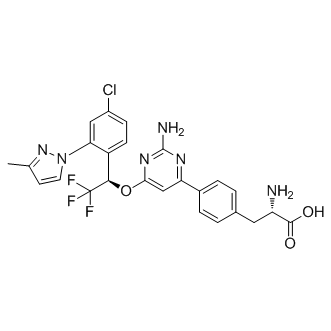
-
LX1606
产品货号 : M10165
cas no: 1033805-22-9
LX1606 (Telotristat ethy) 是一种有效的外周血清素合成小分子抑制剂,通过抑制色氨酸羟化酶 (TPH) 发挥作用,IC50 为 28 nM。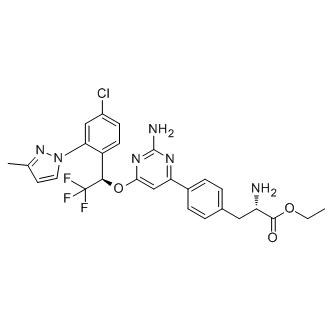



 021-51111890
021-51111890 购物车(0)
购物车(0)
 sales@molnova.cn
sales@molnova.cn






